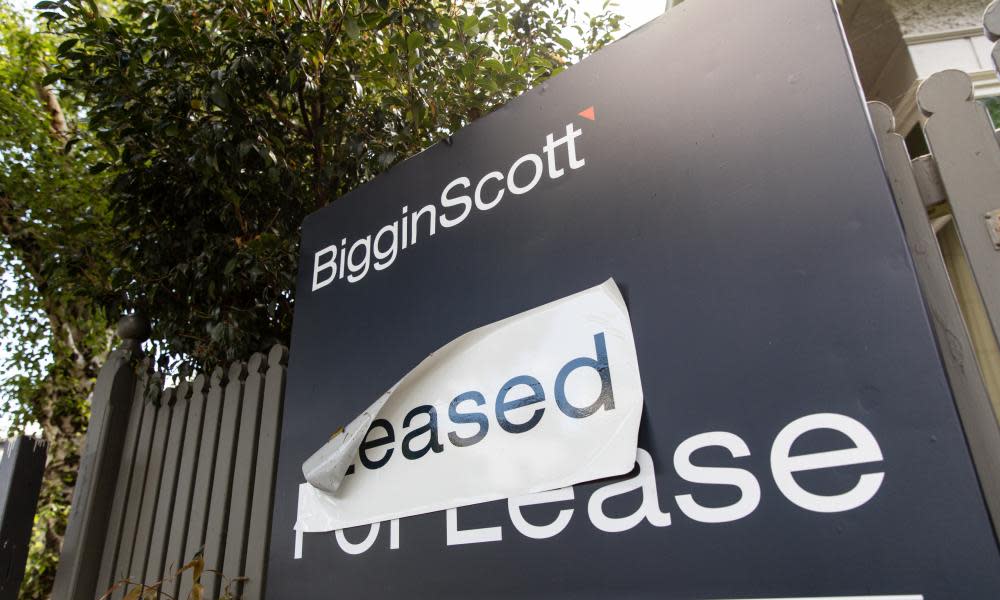Good tenants used to be gold – but in today’s rental market, we’re being squeezed out

When I was growing up, half a century ago, one of the bedrock expectations of our parents’ generation was that each of us – I was the middle son of three – would fly the parental nest before we were out of our teens and, after an indeterminate period in communal “digs”, reach for the gold star of home ownership.
So dominant was the totem of home ownership when I was young that a certain stigma attached to anyone who reached their late 20s, as I did, without hankering for what even Virginia Woolf never romanticised – multiple rooms of one’s own.
In 1981, barely one-fifth of households were occupied by tenants, according to Swinburne University research; just over 40 years on, that fraction has risen to almost one-third, as established by the Australian Institute of Health and Welfare.
Yet the squeeze is on. The upward escalator of interest-rate rises led to an average 5% increase in rents from early 2022 to early 2023. While this is unsurprising at a time when property owners, like nearly everyone, are struggling to maintain their standard of living amid universal price increases, there is a grasping element to rent demands that is threatening the security of those who have proved to be good, responsible tenants over the long term.
Good tenants used to be gold. Today our currency has been debased. As a real-estate agent said to me earlier this year when I queried the proposed rent rise for my inner-suburban Melbourne flat: “Good tenants who kept units spotlessly clean and paid the rent promptly were once prized by landlords. Now they figure they can afford to lose a couple of months’ occupancy and bear the cost of advertising for new tenants to replace you, however good a tenant you’ve been – because they can jack the rent up by $50 a week and how’s the new tenant going to know what the old rent used to be?”
At the end of October it was announced that the rental vacancy rate, now under 1% of all such properties, is the lowest it has ever been. This means that, as someone who has been a paraplegic for the past 30 years and is well adapted to life in a wheelchair, I am doubly vulnerable if my modest home is taken away.
When I look at economic and social trends as an observer (the journalist in me), there is an undeniable fascination with the changes I witness. But in recent weeks speaking as a participant to whom fascination morphs all too readily into dread – and with no apologies for the pun – these trends have started to hit home.
A few months ago my real-estate agency notified me of a rent rise.
Next I was informed of a change of agents and asked whether they could come around and perform a valuation, preferably by the end of that week. Why such urgency? I wondered.
Four weeks ago I received a “notice to vacate” by the end of December, invalid chiefly because the lease I signed protects my tenancy through to March.
Something has gone horribly wrong when the visible evidence of my life, arrayed around me after decades of work, has come under threat.
As someone with a 50-year renting history, I know what it is to be respected and valued for being a good steward of that refuge we all require – a place to call home.
As a wheelchair user for over half that period, I know that only one in 20 units or houses are “fully accessible” – the other 19 either cannot be reached because of impassable stairs or, if they can be, I cannot live there because the shower or bath area, or the toilet, is off limits.
For months now, fearing something of this kind might be in the offing, I have contacted an array of other estate agents and let them know I’d be interested in any one-bedroom units for rent in my community, Hawthorn, where I’m well known and where my NDIS plan rightly describes my chief goal as “to continue to live independently”. They have not come up with a single property yet.
Unlike a certain US politician, I don’t blame everyone else for the situation I find myself in: in fact, I am well aware that if I’d bought a home in earlier years I wouldn’t be in this fix (I’d be in some other fix instead). The process I’m now going through is a copybook case of PTK – perpetual traveller’s karma.
But there is no point to regret, so I don’t indulge. As a journalist ready and willing to up sticks for a desirable interstate posting, I never hankered to have my own home, figuring it would tie me down. Also, I had a wanderlust to satisfy, and the years of income I might have devoted to a mortgage I spent on travel.
My thoughts have lately turned to the well-worn observation that embedded in the Chinese ideogram for crisis is the one for opportunity. The possibility of work in Sydney glimmers over the horizon: maybe it’s time for the ultimate sea change?
But then I see that today the median rental in Sydney sits at about $680 a week – the highest in the country, a whopping 30% costlier than its equivalent in Melbourne; so another well-worn observation – particularly apt on the brink of this El Niño summer – springs to mind: to relocate there would be leaping out of the Melbourne frying pan into the Sydney fire. No wonder the economist’s go-to term for such a market is “overheated”.
• Ken Haley is a veteran newspaper journalist, author and since 2012 a tutor to journalism students at Swinburne, Monash and Melbourne universities

 Yahoo News
Yahoo News 
